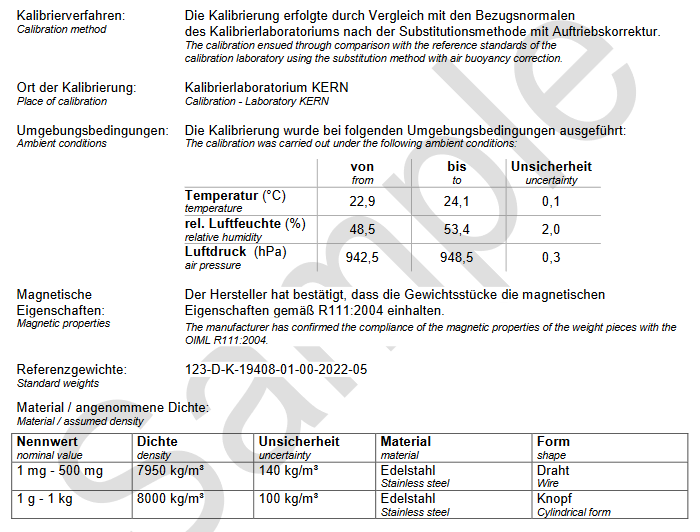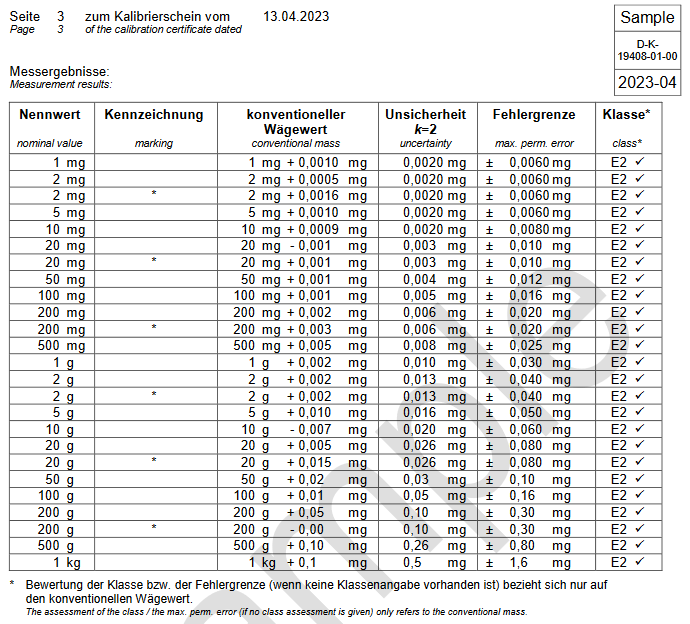In the following the constituents of a calibration certificate for weights are explained.
Depending on the type of the weights the content may vary.

1. "Official" document
The KERN DAkkS calibration laboratory (D-K-19408-01-00) is accredited through the accreditation Point of the German calibration service. The DAkkS calibration certificate is recognised internationally and is available in several languages.
2. Item to be calibrated
The calibration item as well as the type or model with serial number is documented. This means that there is no confusion and guarantees the assignment of the DAkkS calibration certificate to a specific balance.
3. Traceability
The reference standards of the accredited laboratory are monitored in strictly defined cycles and periodically brought into line with national and thereby international standards. This is carefully documented and given on the DAkkS calibration certificate. In this way the basic fundamental traceability to the national standard is ensured.
4. Contracting authority
On the very first page of the DAkkS calibration certificate you will clearly see the applicant or operator of the calibrated checking equipment.
5. Stamp and signature
According to DIN EN ISO 17025, only the designation of the person responsible for the release of the report is required. Due to the value, we additionally print the laboratory stamp as well as the name and signature of the laboratory management and the person responsible for the release of the report.

6. Environmental conditions
Here the environmental conditions are listed during calibration, such as the current temperature, the relative humidity and the current air pressure.

7. Metrological part
In this part of the calibration information on the environmental conditions during the calibration are made. Material, shape and density of the weight are mentioned. The conventional weight value including measurement uncertainty is displayed, as well as the OIML error limit and the OIML class.
8. Conventional weight value
By substitution weighing method (comparative measurement with a reference standard), the exact value of the weight to calibrate is determined. The so-called conventional weight value indicates the deviation of the determined value of the nominal value.
9. Uncertainty (in use)
For each technical measurement investigation, there is some uncertainty in the exact determination of a value. This so-called measuring uncertainty (in use) should objectify measuring results, by establishing in which variation of the true value of the measurement is to be expected. The determination and declaration of measurement uncertainty is very important, because since the smaller it is, the more accurate is the determined value.





